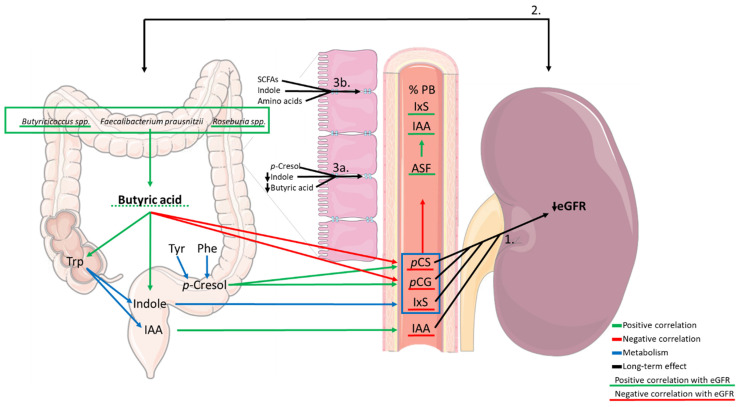Figure 4.
Summary of the association between short-chain fatty acid (SCFA)-producing bacteria, SCFAs (in casu butyric acid) and amino acids and protein-bound uremic toxin (PBUT) precursors in feces, plasma levels of PBUTs and the albumin symmetry factor (ASF) and the estimated glomerular filtration rate (eGFR). Green arrows indicate a positive correlation, red arrows indicate a negative correlation, blue arrows indicate metabolism, black arrows indicate a long-term effect. Underlined factors are correlated to eGFR (green underlining: positive correlation with eGFR; red underlining: negative correlation with eGFR; the dotted line indicates the loss of significance after the Bonferroni correction). While the decrease in the kidney function building up the uremic milieu (1) can influence the gut bacteria and their metabolism causing dysbiosis, this dysbiosis can further contribute to the loss of the kidney function, as indicated by the bidirectional arrow (2). Zoom image: In CKD, next to the decrease in fecal levels of BA [18], the decrease in fecal levels of indole and the presence of p-cresol can have deleterious effects on the intestinal barrier function [28,29] by decreasing expression of tight junction proteins and thus increasing the paracellular transport which can contribute to increased plasma levels of PBUTs (3a). In healthy intestines, SCFAs, indole and amino acids strengthen functionality of the intestinal barrier (3b).Trp: tryptophan; Tyr: tyrosine; Phe: phenylalanine; IAA: indole acetic acid; PB: protein binding; pCS: p-cresyl sulfate; pCG: p-cresyl glucuronide; IxS: indoxyl sulfate.

